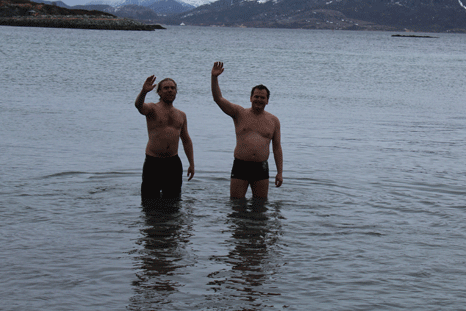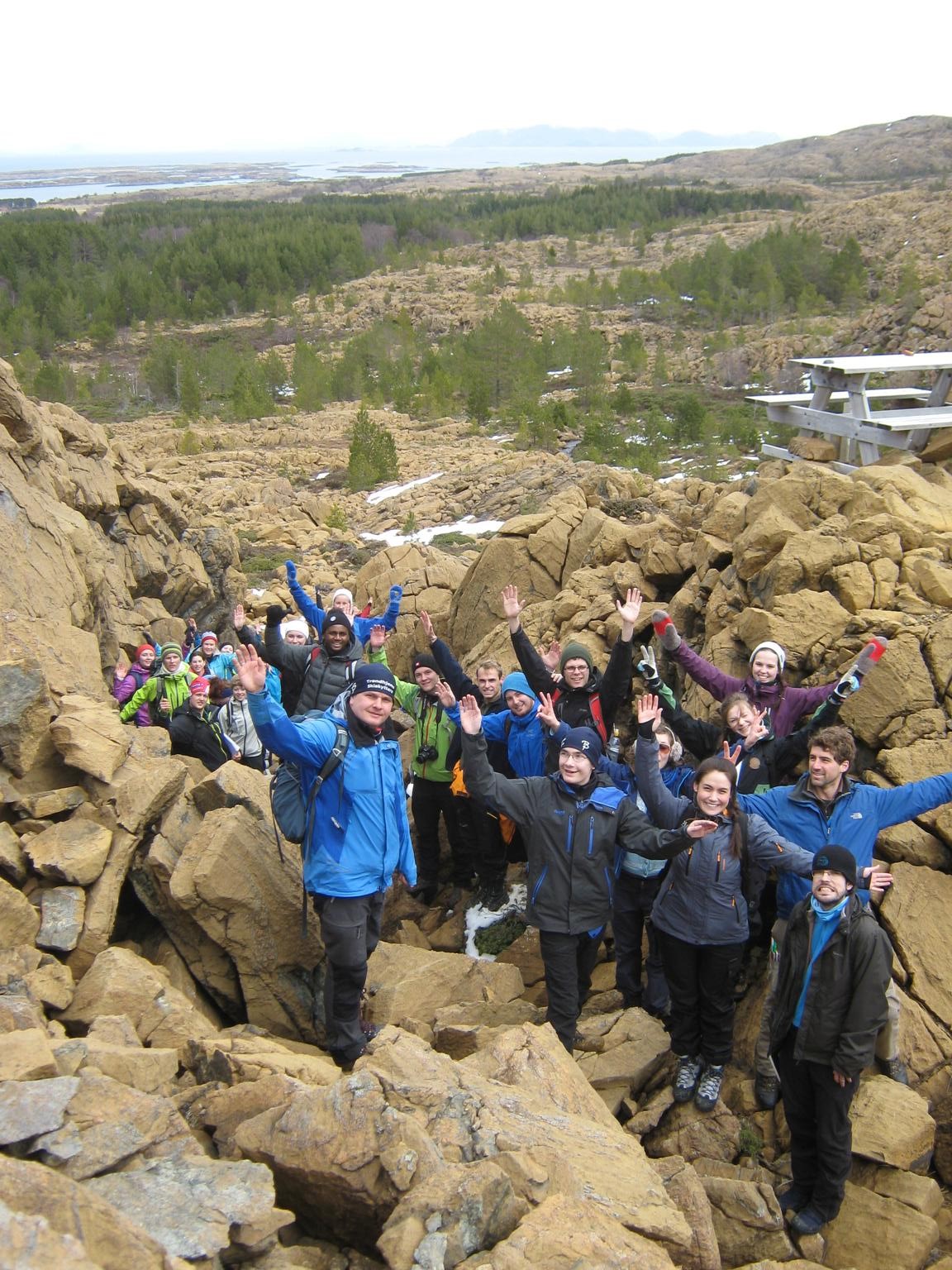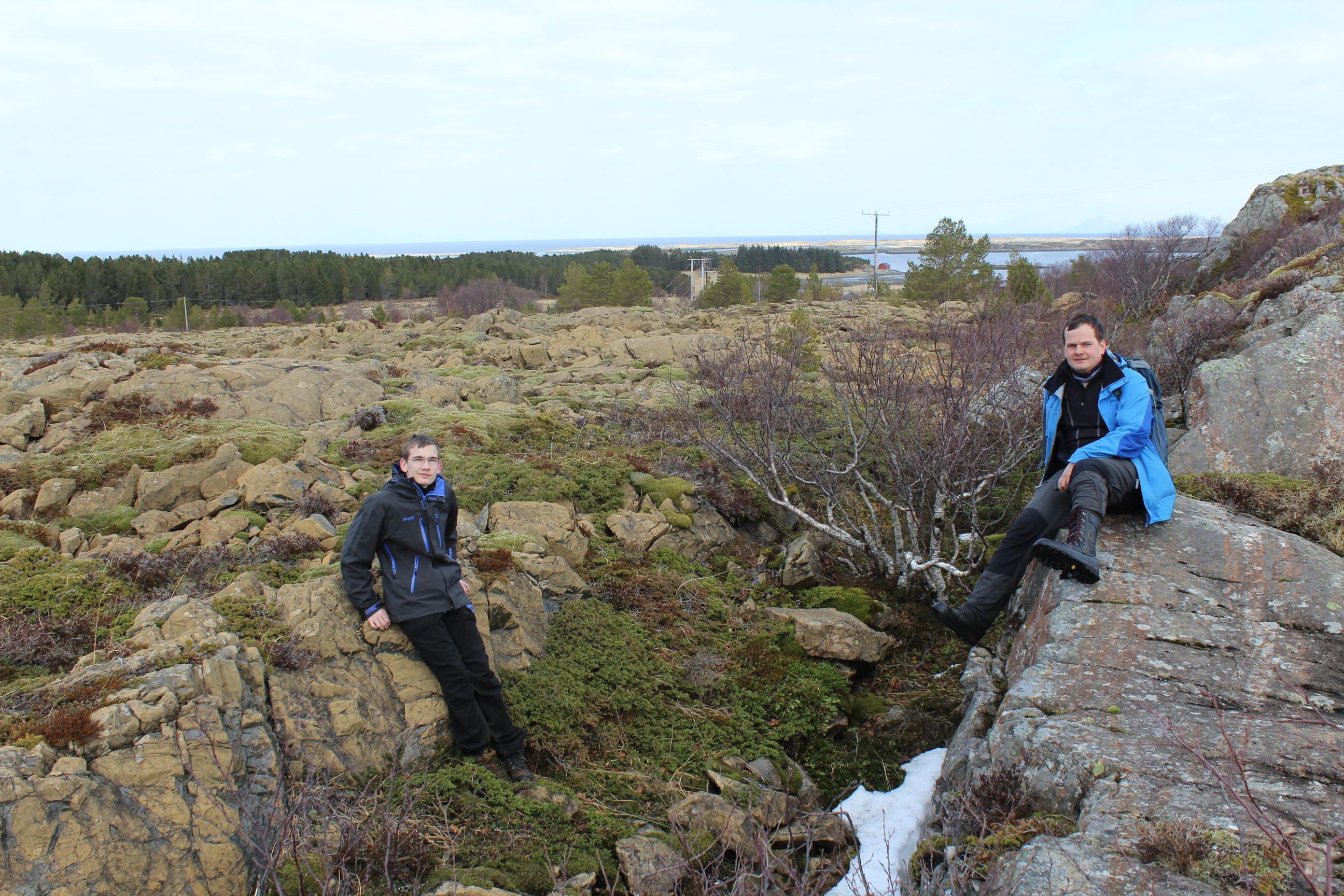Introduction
The Leka 2013 field trip started with a long bus-drive from Trondheim on Friday 19/04/2013. It took about 7 hours, including a few minor stops. The next day we started at nine from Leka camping. Snow had covered the soil at the camping by a few cm's overnight so we were nervous if we could see the rocks that day View. Luckily we started on the opposite side of the island where there was no snow cover.
Geological Introduction
The Leka Island is mainly comprised by an ophiolite complex, overlain by sediments of the Skei-group. We started by looking at the ophiolite complex which is the main Geological attraction of Leka, and the reason the Leka was chosen as "Geologisk National monument" of Norway. An ophiolite is made of a lower part of ultramafic rocks of mantle origin, overlain by crustal ultramafic rocks, which due to fractional crystallization grades into gabbro. Plagiogranites Learn more are the last part of the fractionation process. Cross-cutting relationships with mafic dykes intersecting and being intersected by the plagiogranites (both are cutting each other)tells us that they formed at the same time. Zircon is an incompatible element and hence fractionates into the melt and hence during fractional crystallization will concentrate in the felsic rocks, whereas the mafic parts will be depleted. Zircon is commonly incorporated in the mineral Zircon which is used for radiometric dating using the U-Pb system. Because the ultramafic and mafic rocks are low in Zircon the plagiogranites are useful for dating the rocks.
Includes leucocratic to mesocratic plagioclase- and quartz-rich metamorphosed intrusive rocks containing little or no potassium feldspar. Plagioclase is variably altered to epidote, white mica, and chlorite.
The ultramafic rocks on Leka
The mantle rocks on Leka are mainly of the two rock types harzburgite and dunite, which are difficult to differentiate from the lower crustal rocks which appear similar because they have the same minerals. The boundary between the mantle is termed MOHO and we differentiate between the geophysical MOHO and the petrologic MOHO. The geophysical MOHO is based on seismic velocity, meaning that it is not possible to distinguish between the lowermost crust and the mantle because they have the same mineralogy. Instead we need textures to distinguish them because of their different origin. On Leka it is possible to see the Petrological MOHO and we all aligned with the MOHO View.
The mantle ultramafics on Leka are so-called depleted mantle rocks. This means that they have lost some melt in contrast the so-called fertile mantle that has not lost melt. The melt formed by partial mantle is basaltic in composition and different from the mantle composition, by removing the melt the mantle also changes compostion, becoming a dunite or more commonly harzburgite from the original lherzolite. 10% melting gives harzburgite, whereas dunite requires 25% melting.
The mantle rocks are metamorphosed in the mantle and they have a foliation, formed by mantle convection and has a rugged surface due to different weathering of olivine and orthopyroxene View . Most of the olivine and pyroxene is altered to serpentine, by metamorphic processes in the Caledonian collision (see metamorphism section) the color of both dunite and harzburgites is yellow brown on weathered surfaces making them easy to distinguish, but dark green on fresh surfaces similar to many other common rocks View . Dunite is more smooth and comprises a smaller part of the rocks than harzburgite. Dunite commonly occur as pods or vein-like, testifying to local variation in partial melting of the mantle.
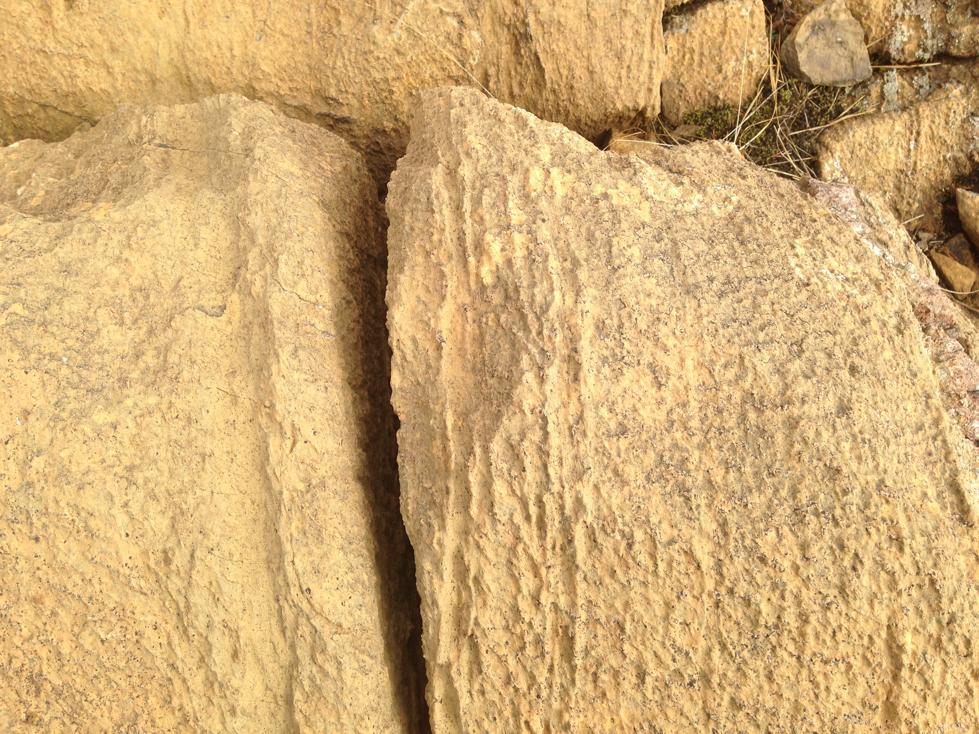
Harzburgite with metamorphic foliation and rugged surface due to different weathering of pyroxene and olivine.
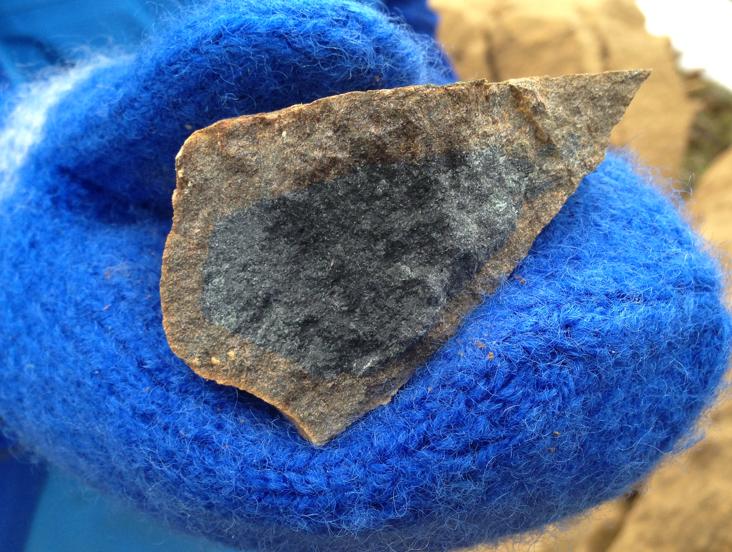
Weathering of harzbugite gives yellow-brown color. Note the dark color in the middle of the sample, that was split by a hammer.
Gabbro
As we go upward in the sequence fractional crystallisation reaaches plagioclase and we get gabbros, which are still intermixed with ultramafic rocks including pyroxenite and dunite. The are commonly observed together within small outcrops. The first gabbros to appear are typically layered with plagioclase and pyroxene layers respectively. Towards the upper parts gabbros are more massive and grade into a sheeted dyke complex. Since we did not study that at the Leka trip this year we will not discuss that further here.
Pillow lavas
Pillow lavas were also observed at the Leka excursion on Magerøy. Though they are not easy to distinguish at first glanse, because they are strongly deformed. In section parallel to the lineation the pillow structure has a an elongated elipsoid shape, but in sections normal to the lination the pillow structure is evident View.
Plagiogranite
Plagiogranites are the last fractional crystallistation product of the fractional crystallisation (or a very low fraction of melt..).
Skei group sediments
under construction...
Caledonian metamorphism
under construction...
Mineral samples collected during 2013 excursions
under construction...
Quantitative mineralogy of the serpentinites
under construction...
Leka Beach
Swimming in the tempered waters of Leka is a great pleasure. It is also a mandatory part of the trip.
